Scan-Speak D3806-82000
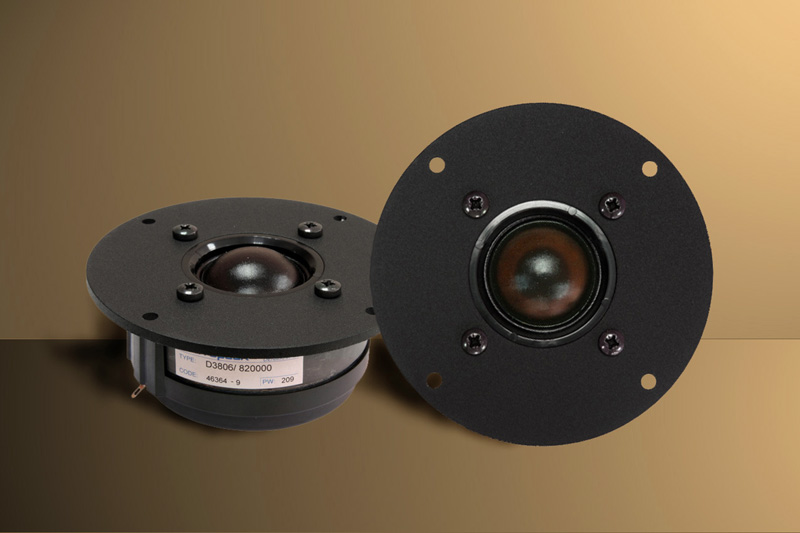
Scan-Speak D3806-82000 is well known to audiophiles as a midrange driver of the highly regarded Spendor SP1/2. This Classic-series driver is factory optimized for an upper-midrange performance and utilizes the Scan-Speak patented Symmetrical Drive (SD-2) motor.
This is the manufacturer's brochure
![]()
| Driver Properties | Electrical Parameters | |||
|---|---|---|---|---|
| Membrane Shape | Dome | Nominal Impedance | 8 Ω | |
| Membrane Material | Textile | Rated Power | 100W | |
| Surround | Textile | Sensitivity | 89 dB/W/m | |
| Voice Coil Diameter | 38mm | Recommended Frequency Range | 2-18KHz | |
| Magnet System | Ferrite | DC Resistance | 5.7 Ω | |
| Ferrofluid | NO | Nominal Resonance Frequency | 450 Hz | |
| Front Plate Material | Aluminum alloy | Linear Excursion | ± 0.4 mm | |
| Rear Chamber | YES | Voice coil inductance | 0.04 mH | |
My Measurements
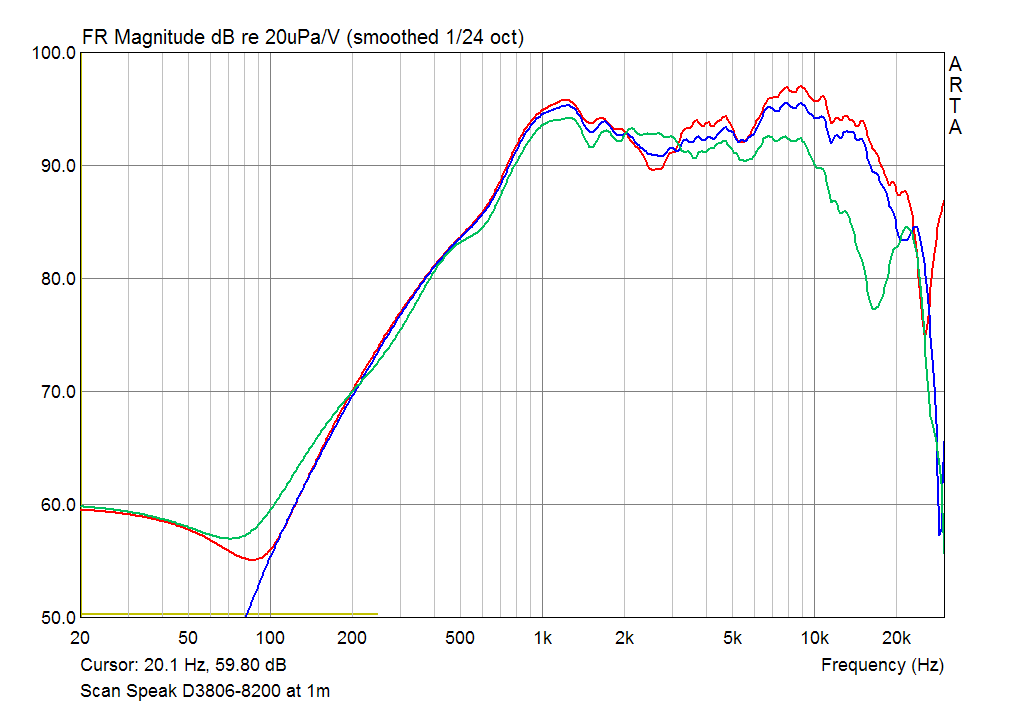
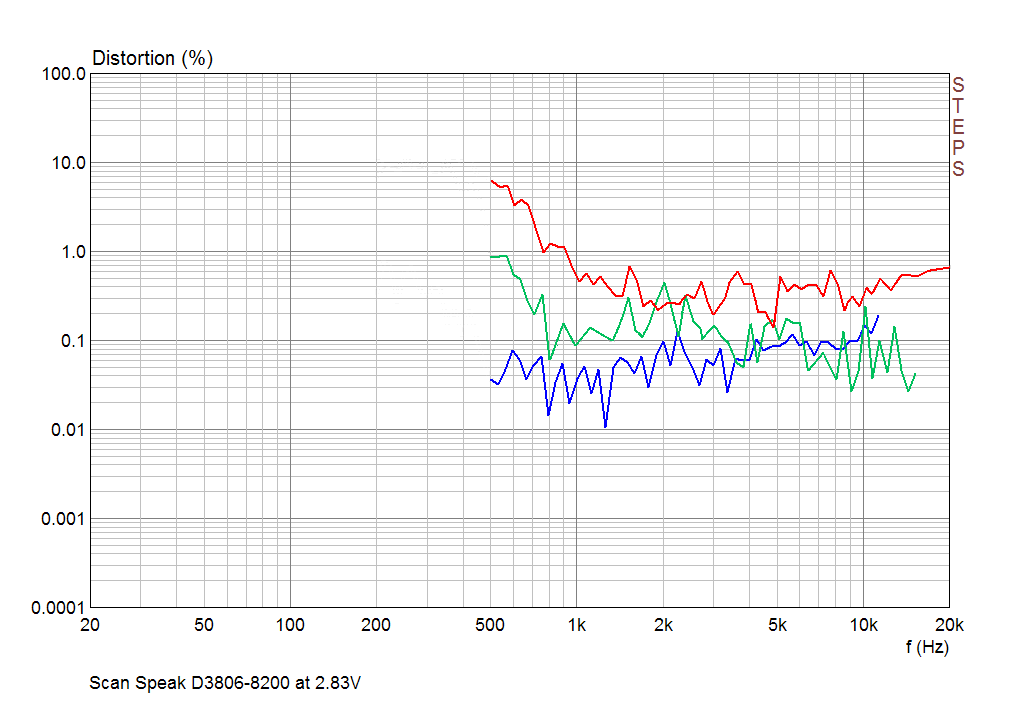
Frequency response at 1m with 2.83 V input RED - on axis, BLUE - 15 º off axis, GREEN - 30 º off axis
on left. The significant dip is located at 2.5 Khz, as distinct of
the manufacturer's datasheet, which shows it at 3.5 kHz.
The second, third and fourth harmonic curves measured at 2.83V RMS
on right.
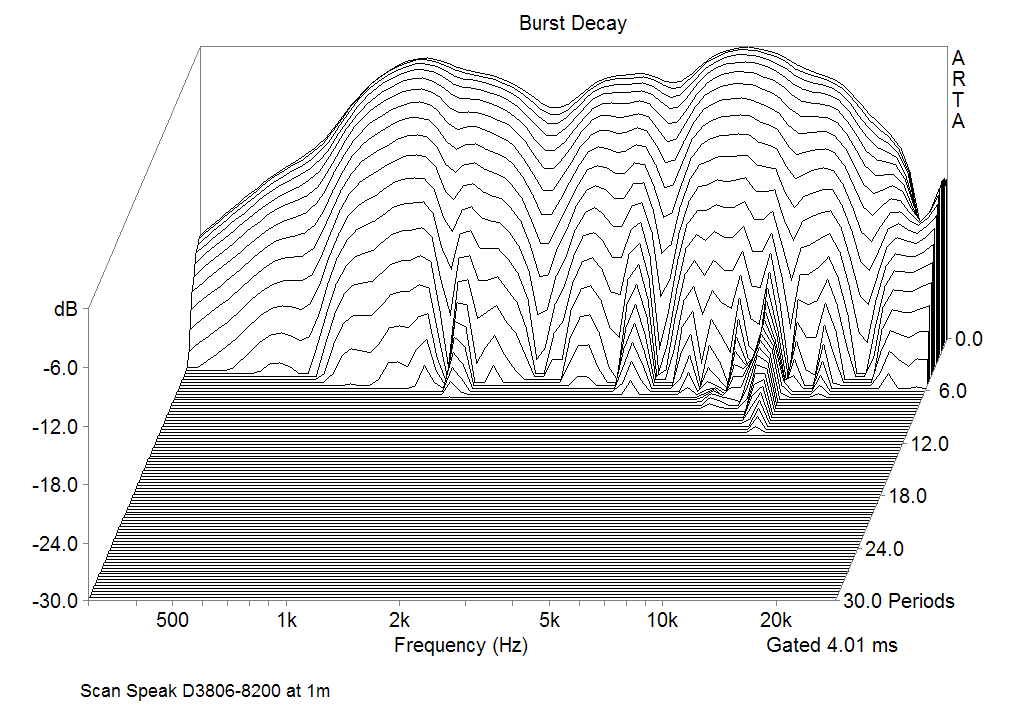
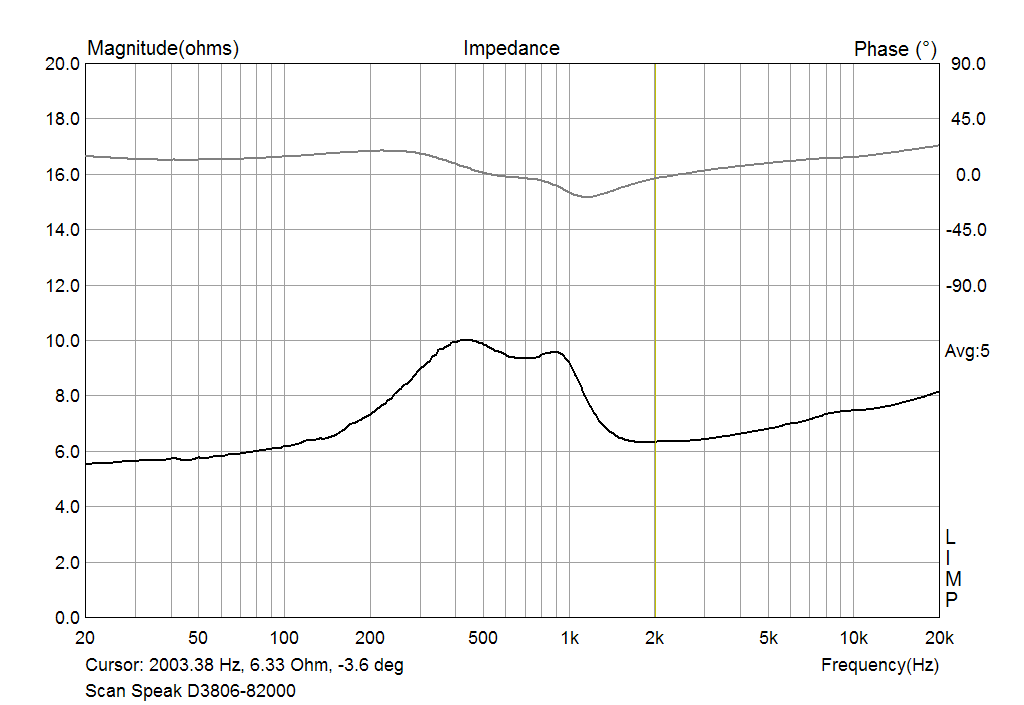
Burst decay response, measured at 1m on axis on left. The impedance curve on right.
Remarks
This is a driver with very pleasant sonic signature - full-blooded and accurate in the same time. With a simple network the non-linearity can be reduced
up to tolerable limits. This will decrease the overall sensitivity
and the upper usable frequency, though.
Since I found D3806 valuable enough, I chose the hard way to cope
this problem - a development of a proper waveguide. With this
solution I hoped to achieve a better ability for an integration
with a midbass speakers too.
The Waveguide
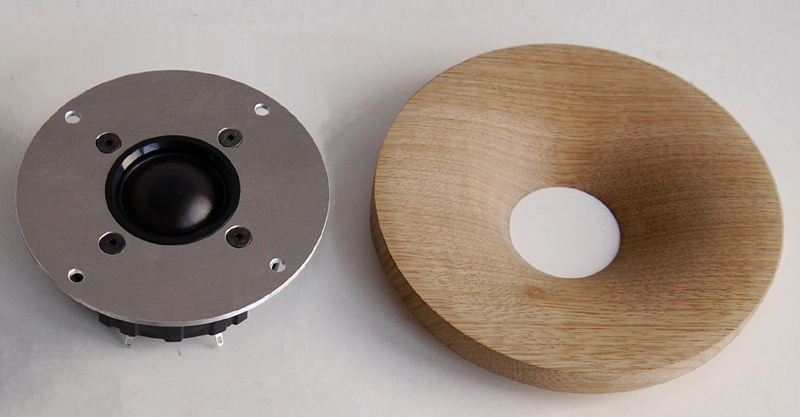
The picture above shows the WG48171 waveguide and the D3806 with new
faceplate. It differs from the original one only by the shape of the
slots for the assembling screws, which were changed from round head
to flat head type, on a way to avoid making the waveguide back
surface very complex. The screw slots of the factory plate can be
milled as well, but I decided to keep them as is.
The waveguide itself is made of a beautiful African wood Limba,
which can be milled easily an has an excellent natural tonality.
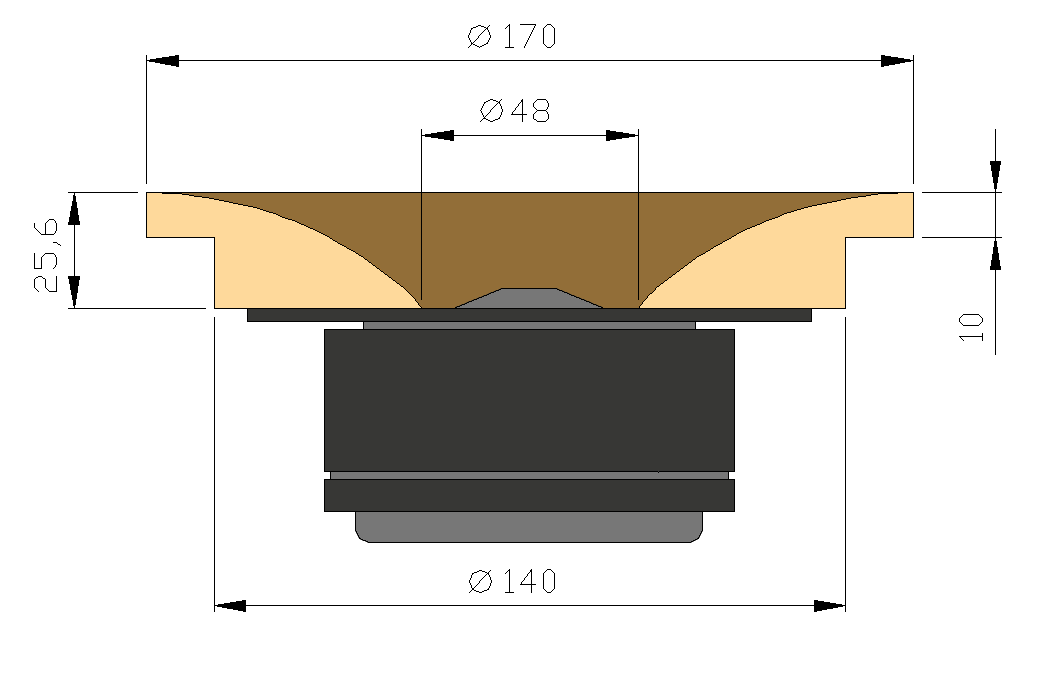
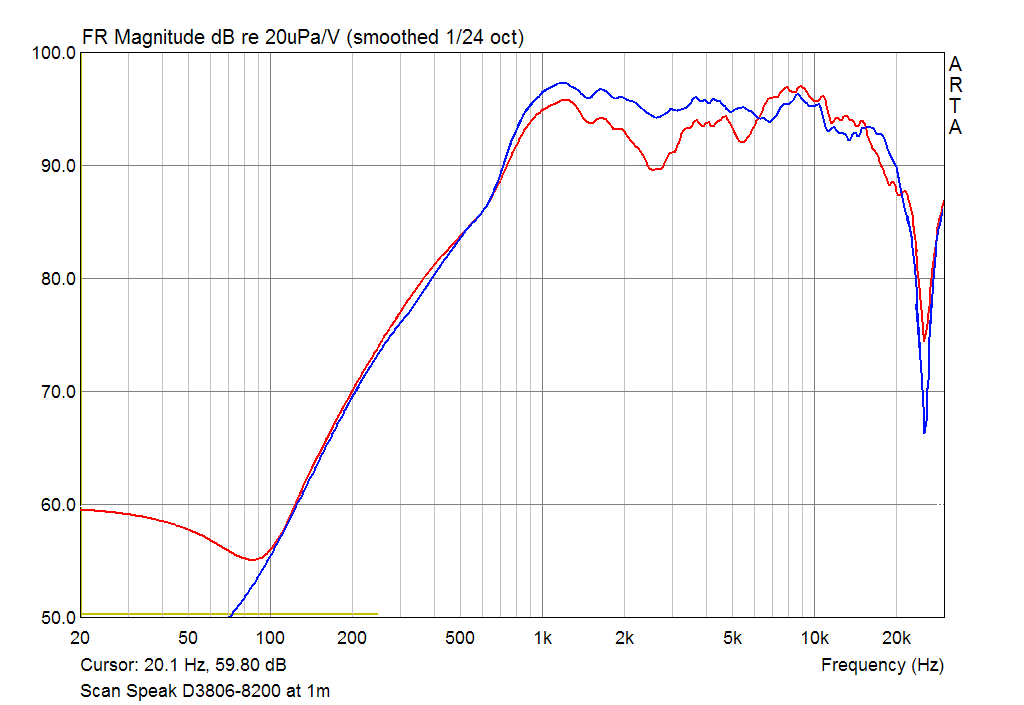
The waveguide was designed to be front-mounted by screws or to be glued to the front
panel if the driver has an access from the back.
In both cases a slot with a depth of 10mm and diameter of 171mm must be
dig in the front panel.
The graphics at right shows the obvious improvement of the SPL
performance graph, when the driver is mounted in the waveguide
(blue) compared to the surface mounted driver without it (red). The
dip at 2.5 kHz has been reduced, the overall graphics is smoother
and, unexpectedly, the performance at the upper end was a bit extended.
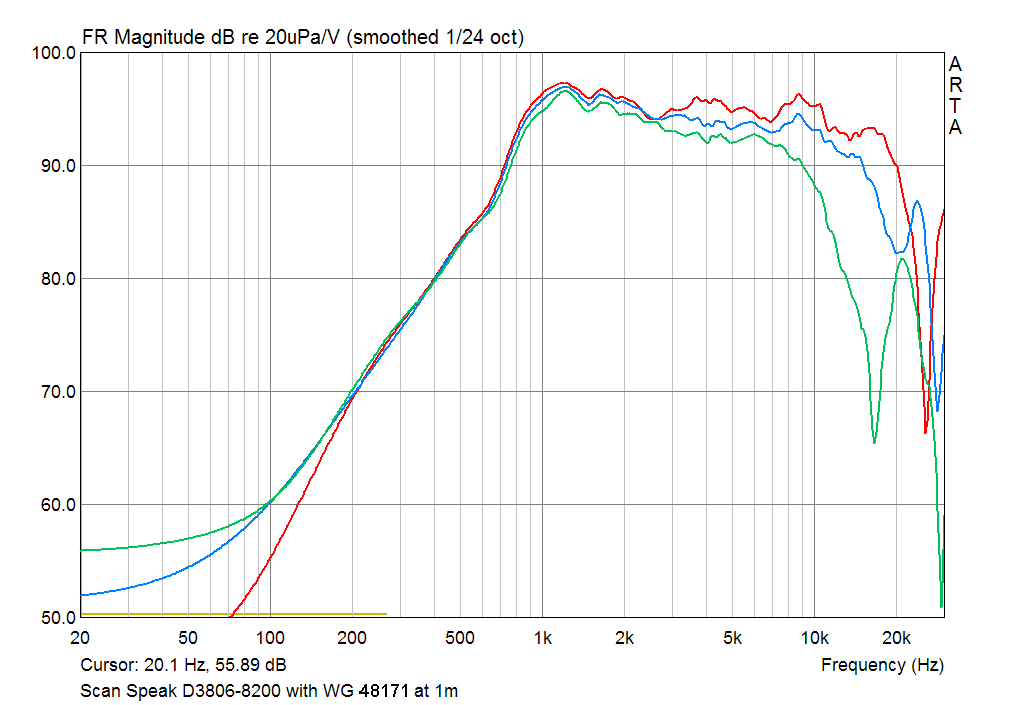
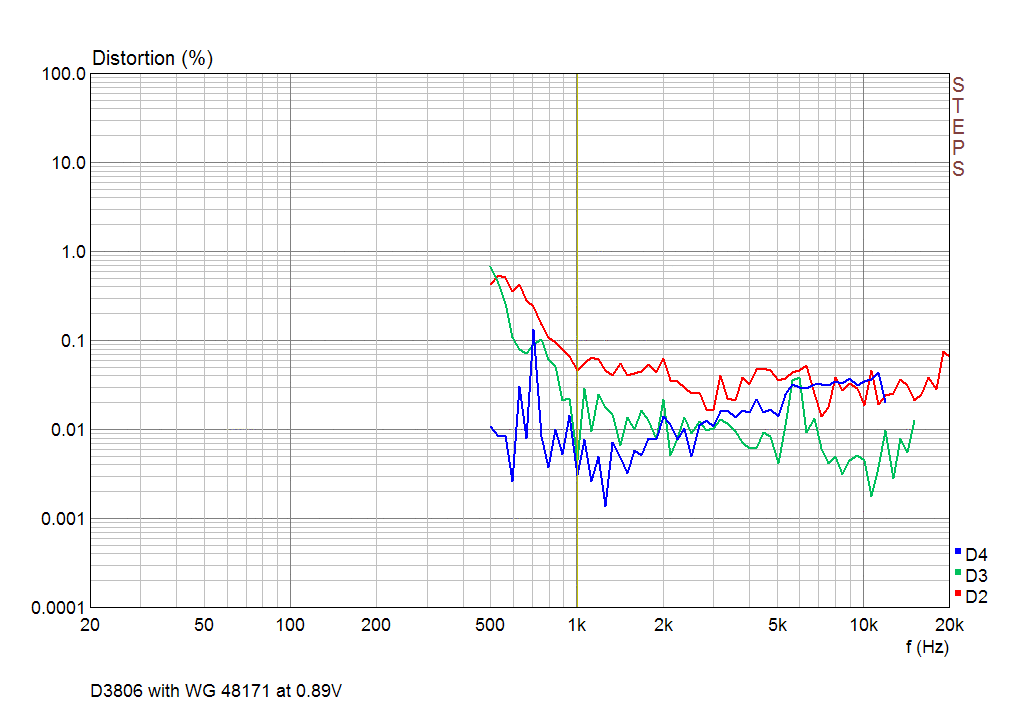
Frequency response at 1m with 2.83 V input RED - on axis, BLUE - 15 º off axis, GREEN - 30 º off axis
on left. We can see a slight beaming increase compared to the raw driver.
The second, third and fourth harmonic curves measured at 2.83V RMS on right.
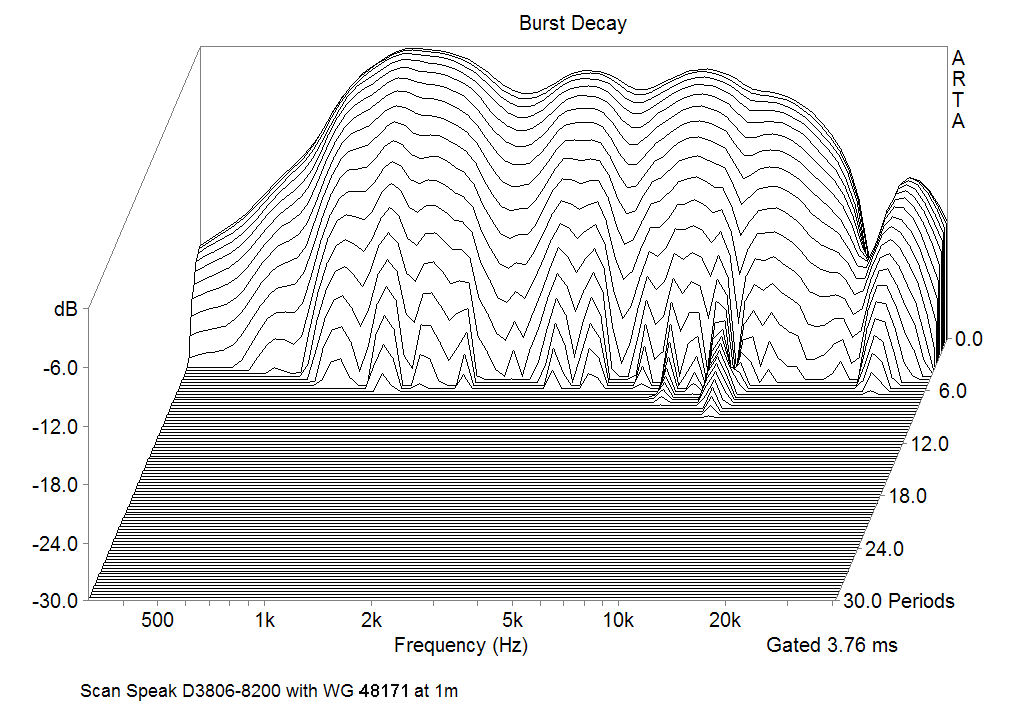
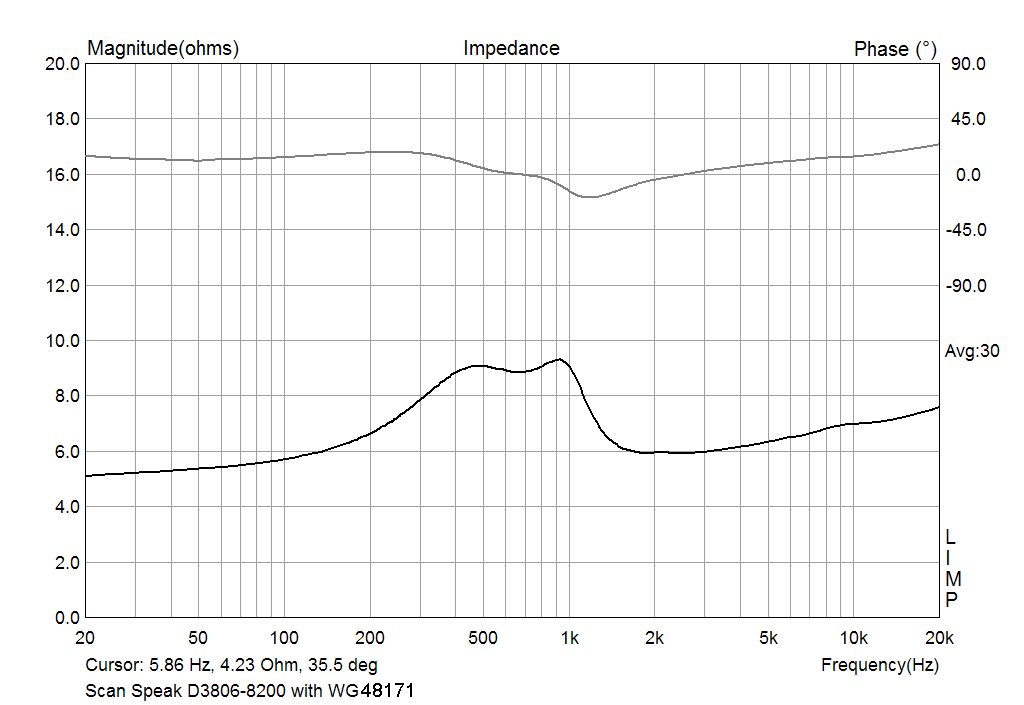
Burst decay response, measured at 1m on axis on left. The impedance curves on right.
Final notes
The first impression, even we try to listen the tweeter+waveguide assembly without crossover, is the sense of
freedom and breadth. For my troubled mind, there was no change
of the excellent driver's natural tonality. The assembly
can be used as low as 1,5 kHz without necessity of a complex
crossover. It shows an excellent capability for integration with
various midrange and midbass drivers of a different types.

